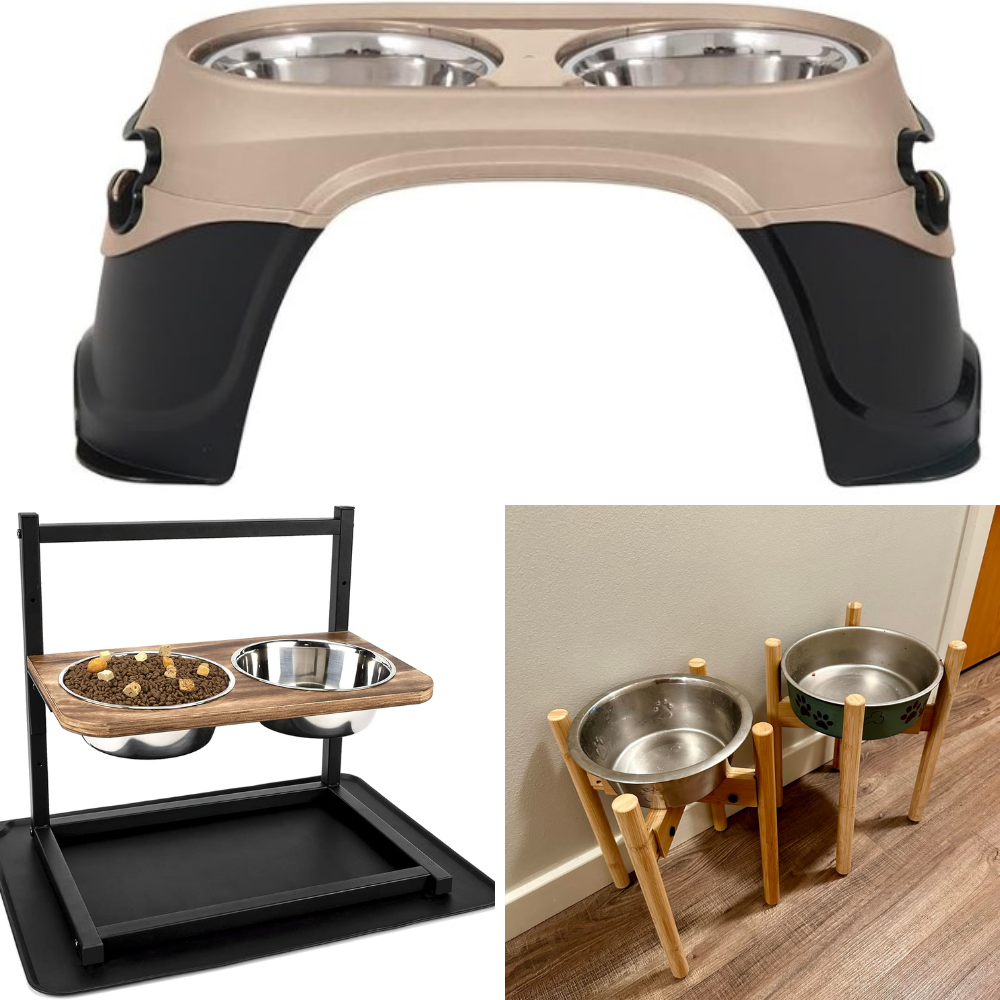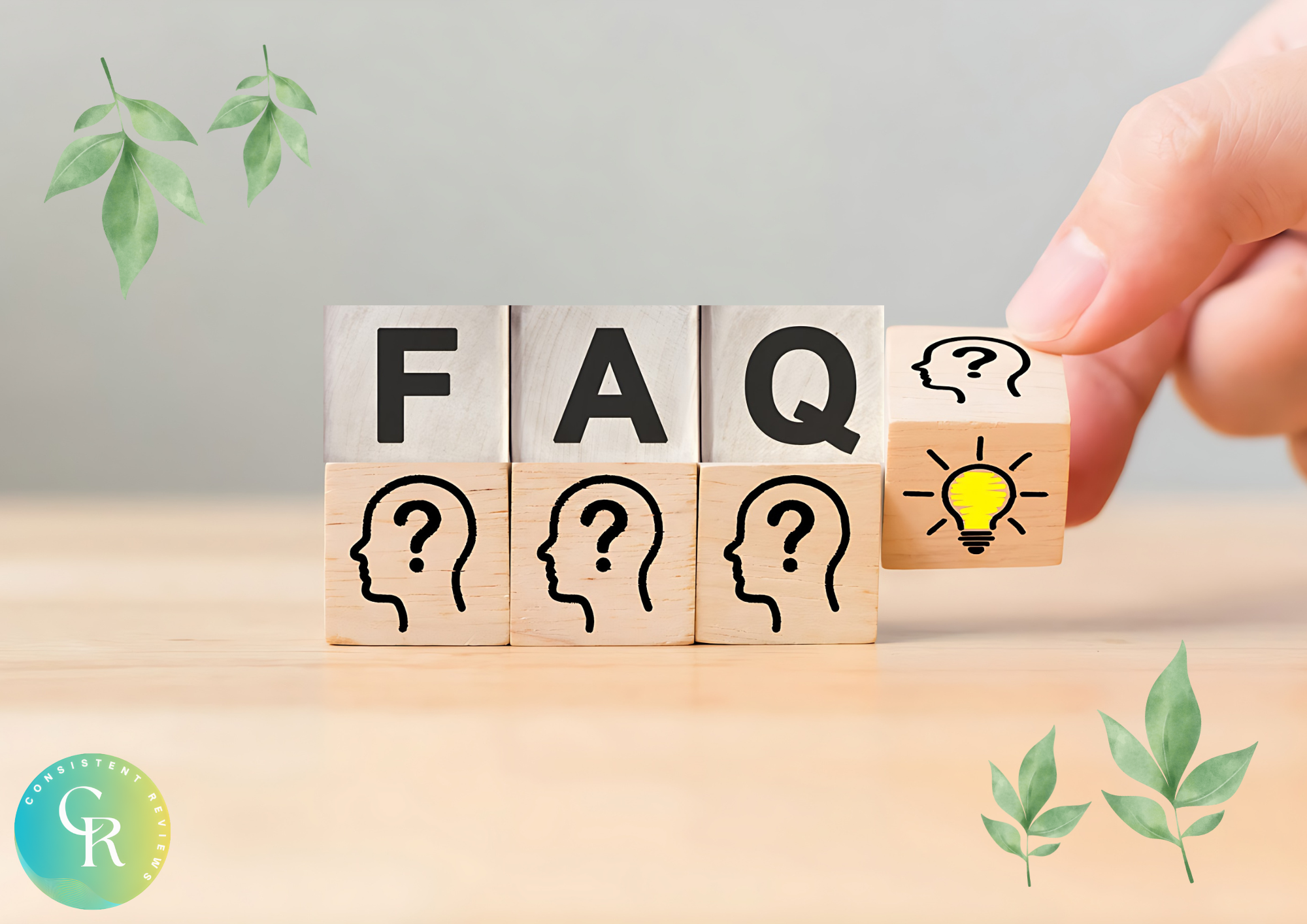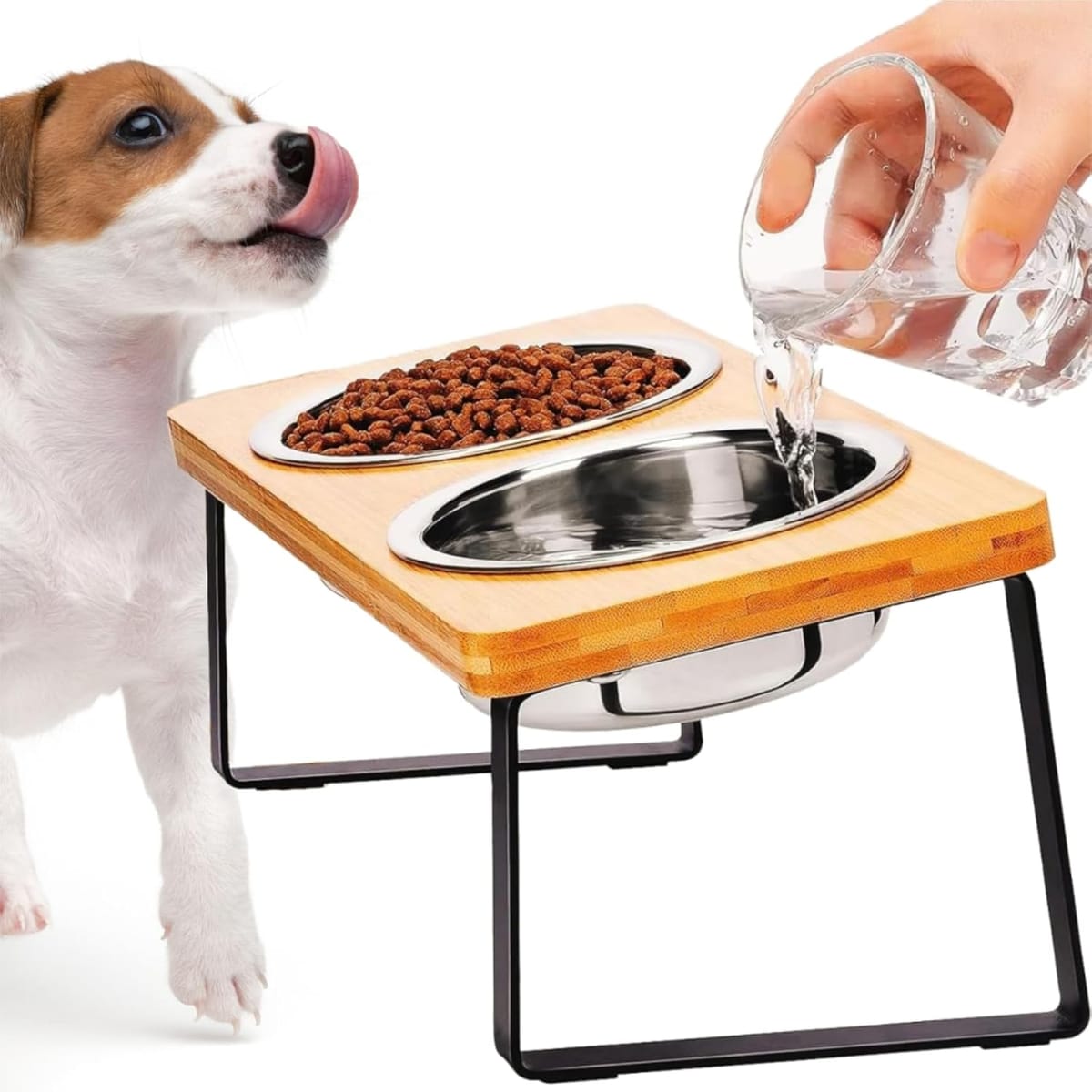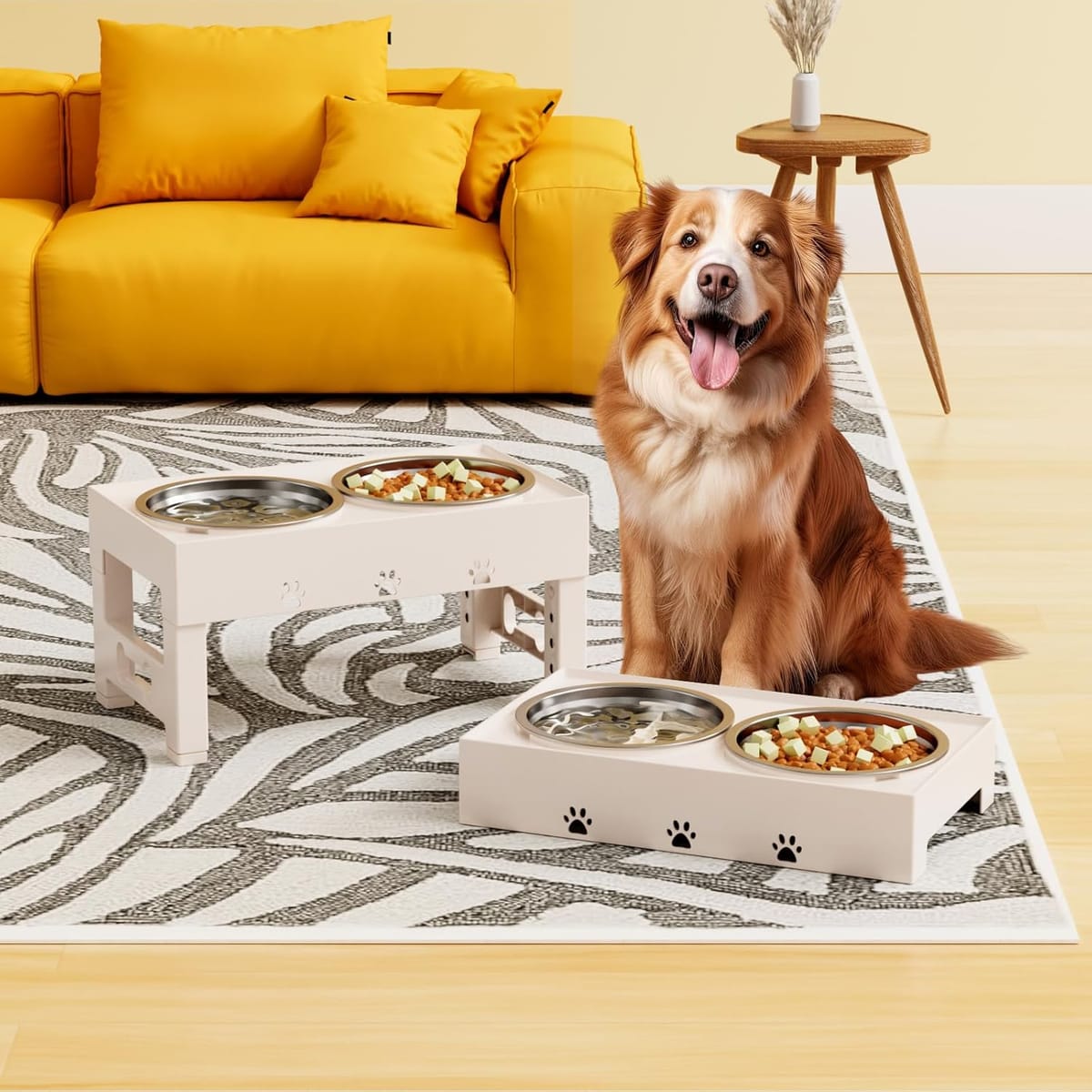Key Takeaways:
- Elevated dog bowls can potentially reduce neck strain and improve digestion for large and giant breed dogs.
- The use of raised feeders may help prevent certain health issues, such as bloat, especially in older and larger dogs.
- Understanding your dog's specific needs and consulting with a veterinarian can guide the best feeding practices.
Introduction to Elevated Dog Bowls

Elevated dog bowls have become a popular choice among pet owners, especially those with large breed dogs. But what is the science behind elevated dog bowls? These raised feeders are designed to elevate the food and water bowls off the ground, which can have several benefits for your furry friend. The concept is simple: by raising ground level feeding the bowls, dogs can eat and drink more comfortably, potentially reducing the risk of certain health issues.
The idea of using elevated feeders isn't just a modern trend; it has roots in veterinary medicine. The American Veterinary Medical Association has explored the benefits of raised feeder dog bowls, particularly for giant breed dogs. These breeds, with their larger frames and unique anatomical structures, can benefit significantly from elevated feeding. But it's not just about comfort; there's a science to it that involves understanding the dog's digestive system and how it interacts with gravity.
The Anatomy of Large and Giant Breed Dogs
Large and giant breed dogs, such as Great Danes and Saint Bernards, have unique anatomical features that can make feeding time a bit challenging. Their long legs, narrow chests and deep chests mean that bending down to eat from floor-level bowls can cause neck strain and discomfort. This is where elevated food bowls come into play, providing a more natural feeding position that aligns with their body structure.
Moreover, these breeds are at a higher risk of developing bloat, a serious condition known as gastric dilatation-volvulus. This occurs when a dog's stomach fills with gas and twists, cutting off blood flow and leading to a potentially life-threatening situation. Elevated dog bowls can help prevent bloat by promoting a more natural eating posture in big dogs, which may reduce the amount of air swallowed during meals.
The Role of Elevated Dog Bowls in Preventing Bloat
Bloat is a serious concern for dog owners, particularly those with large and giant breeds. The condition can develop rapidly and requires immediate veterinary attention. One of the risk factors for bloat is eating too quickly, which can cause a dog to swallow excess air. Elevated dog bowls can help slow down fast eaters develop bloat by encouraging a more relaxed eating pace.
Research from Purdue University suggests that raised feeders may reduce the risk of bloat in certain dogs. By elevating the dog's food bowl, dogs are less likely to gulp down their food, which can help prevent the stomach from filling with air. However, it's important to note that other factors, such as the dog's breed and eating habits, also play a role in the development of bloat.
Benefits of Raised Dog Bowls for Senior Dogs
As dogs age, they may experience joint pain and stiffness, making bending down to eat from regular bowls difficult. Raised dog feeders can alleviate this discomfort by providing a more accessible feeding height. This is particularly beneficial for senior dogs, who may have arthritis or other mobility issues.
In addition to reducing joint strain, elevated feeders can also improve digestion in older dogs. By allowing the dog to eat in a more natural position, the digestive tract can function more efficiently, reducing the increased risk of gastrointestinal issues. For pet owners with senior dogs, investing in an elevated dog dish can be a simple yet effective way to enhance their pet's quality of life.
Elevated Dog Bowls and Neck Strain
Neck strain is a common issue for large and giant breed dogs, especially when they have to bend down to eat from floor-level bowls. This repetitive motion can lead to discomfort and even long-term health problems. Elevated dog bowls can help mitigate this issue by raising the food and water bowls to a more comfortable height.
By reducing the need for dogs to bend their necks, raised feeders can help prevent neck strain and associated pain. This is particularly important for dogs with existing neck or spinal issues, as it can help prevent further injury. For dog owners, using elevated feeder bowls can be a proactive way to support their pet's musculoskeletal health.
The Impact of Elevated Feeders on Eating Habits
Elevated slow feeders can also influence a dog's eating habits, encouraging slower and more mindful consumption. For fast eaters, raised bowls can help slow down the eating process, reducing the risk of choking and digestive issues. Slow feeder dog bowls, which are often elevated, can further enhance this effect by incorporating obstacles that require the dog to eat more deliberately.
For dogs that tend to gulp their food, elevated feeders can be a game-changer. By promoting a slower eating pace, these bowls can help prevent overeating and associated weight gain. This is particularly beneficial for large breeds, which are prone to obesity and related health problems.
Choosing the Right Elevated Dog Bowl



When selecting an elevated dog bowl, it's important to consider your dog's size, breed, and specific needs. For large and giant breeds, a raised food bowl that is appropriately sized can make a significant difference in their comfort and health. The height of the raised dog bowl should allow the dog to eat without straining their neck or back.
Additionally, consider the material of the elevated dog feeder dish. Stainless steel bowls are a popular choice due to their durability and ease of cleaning. Many elevated feeders are also dishwasher safe, making them convenient for busy pet owners. By choosing the right raised dog feeder, you can ensure that your furry friend enjoys a comfortable and healthy mealtime experience.
The Debate: Are Elevated Dog Bowls Good for All Dogs?
While elevated dog bowls offer numerous benefits for large and giant breeds, they may not be suitable for all dogs. Small dogs, for example, may not require raised feeders, as their shorter stature allows them to eat comfortably from floor-level bowls. Additionally, some studies suggest that elevated bowls may increase the risk of bloat in certain larger breeds, so it's important to consult with a veterinarian before making a decision.
For dog owners considering elevated feeders, it's crucial to weigh the pros and cons based on their pet's individual needs. Factors such as the dog's breed, age, and health status should all be taken into account. By doing so, pet owners can make an informed decision that supports their dog's overall well-being.
Practical Tips for Using Elevated Dog Bowls
To get the most out of elevated dog bowls, it's important to use them correctly. Start by measuring your dog's height to determine the appropriate bowl height. The top of the bowl should be level with your dog's chest, allowing them to eat comfortably without bending their neck.
Additionally, monitor your dog's eating habits and adjust the feeding setup as needed. If your dog is a fast eater, consider using elevated dog feeders or a slow feeder dog bowl to further slow down their eating pace. Regularly check the bowls for cleanliness and ensure they are securely attached to the feeder to prevent spills.


Are elevated dog bowls suitable for small dogs?
Elevated dog bowls are generally more beneficial for large and giant breeds. Small dogs typically do not require raised bowl feeders, as they can comfortably eat from floor-level bowls. However, if a small dog has specific health issues, such as arthritis, an elevated bowl may be helpful.
Can elevated dog bowls prevent bloat in all dogs?
While elevated dog bowls can help reduce the risk of bloat in some dogs, they are not a guaranteed prevention method. Other factors, such as the dog's breed, eating habits, and overall health, also play a role in the development of canine bloat. It's important to consult with a veterinarian for personalized advice.
How do I choose the right height for an elevated dog bowl?
To determine the correct height for an elevated dog bowl, measure your dog's height from ground level on the floor to the top of their shoulders. The top of the bowl should be level with your dog's chest, allowing them to eat comfortably without bending their neck.

Elevated dog bowls offer a range of benefits for large and giant breed dogs, from reducing neck strain to potentially preventing bloat. By understanding the science behind elevated feeders and considering your dog's specific needs, you can make an informed decision about whether raised bowls are right for your furry friend. Always consult with a veterinarian to ensure that your feeding practices support your dog's health and well-being.











